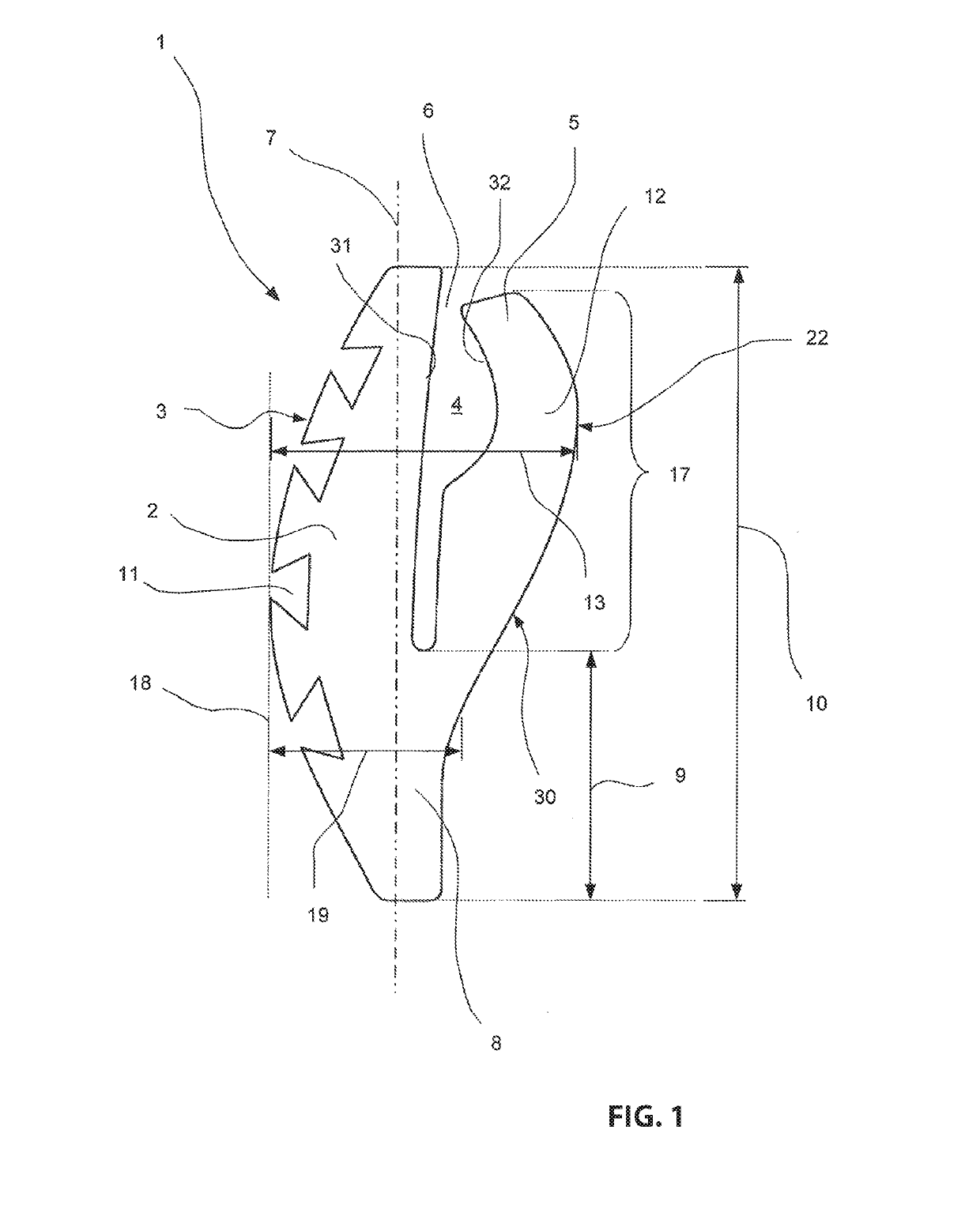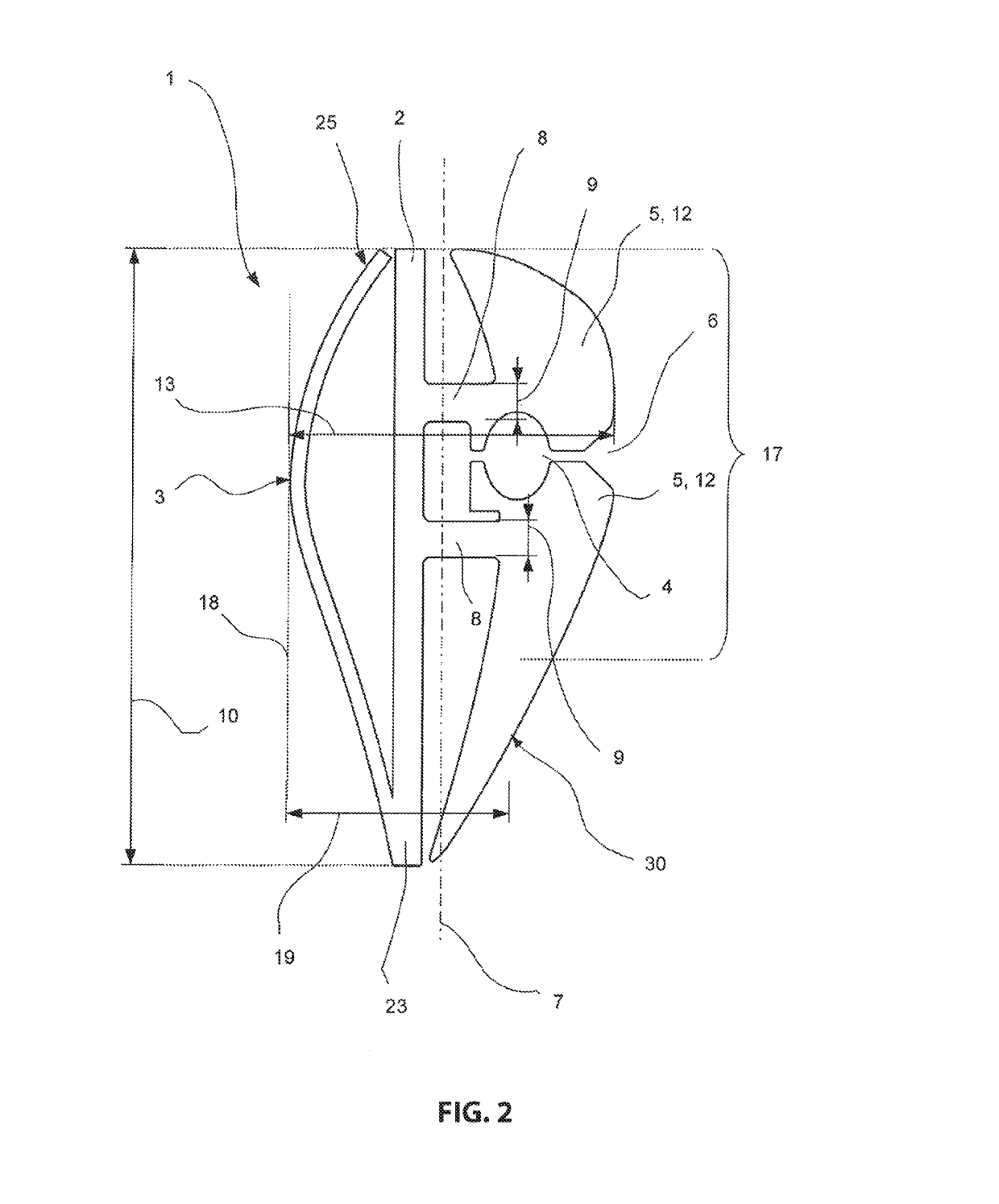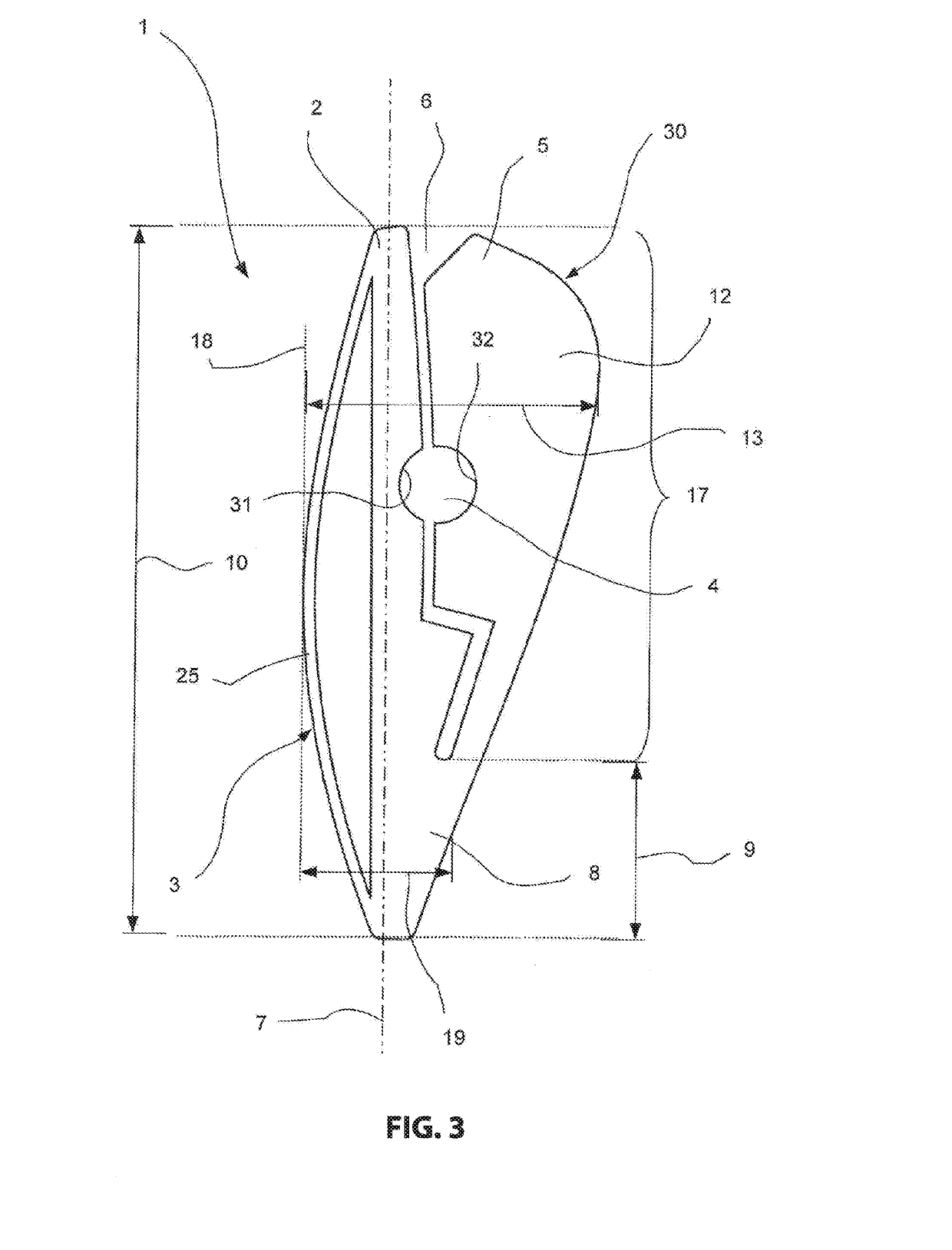Bracket for an orthodontic device
a technology for brackets and orthodontic devices, applied in the field of brackets for orthodontic devices, can solve the problems of hardly being able to completely treat larger tooth misalignments, hardly being able to unintentionally remove arch wires, and hardly being able to cause large teeth movements, etc., to achieve simple bracket configuration, reduce risk, and increase wear comfort
- Summary
- Abstract
- Description
- Claims
- Application Information
AI Technical Summary
Benefits of technology
Problems solved by technology
Method used
Image
Examples
Embodiment Construction
[0076]A first embodiment that is illustrated in FIG. 1 includes a bracket 1 according to the invention that includes a bracket base 2 and a locking device 5. The bracket base 2 and the locking device 5 are directly connected with each other by a bar 8. The bracket 1 includes an attachment surface 3 at a surface 28 of a tooth 27 that is not illustrated in FIG. 1 wherein the attachment surface is connected with the respective surface 28 in an inserted condition of the bracket 1 at least indirectly, advantageously directly.
[0077]In order to provide a better interconnection between the bracket 1 and the respective surface 28 of the respective tooth 27 the bracket base 2 includes a plurality of undercuts in a portion oriented towards the surface 28 wherein the undercuts are configured dovetailed in the illustrated embodiment. These undercuts respectively form a filling portion 11 that is configured to receive an attachment medium by which the bracket 1 is attached at the respective tooth...
PUM
| Property | Measurement | Unit |
|---|---|---|
| Length | aaaaa | aaaaa |
| Length | aaaaa | aaaaa |
| Length | aaaaa | aaaaa |
Abstract
Description
Claims
Application Information
 Login to View More
Login to View More - R&D
- Intellectual Property
- Life Sciences
- Materials
- Tech Scout
- Unparalleled Data Quality
- Higher Quality Content
- 60% Fewer Hallucinations
Browse by: Latest US Patents, China's latest patents, Technical Efficacy Thesaurus, Application Domain, Technology Topic, Popular Technical Reports.
© 2025 PatSnap. All rights reserved.Legal|Privacy policy|Modern Slavery Act Transparency Statement|Sitemap|About US| Contact US: help@patsnap.com



